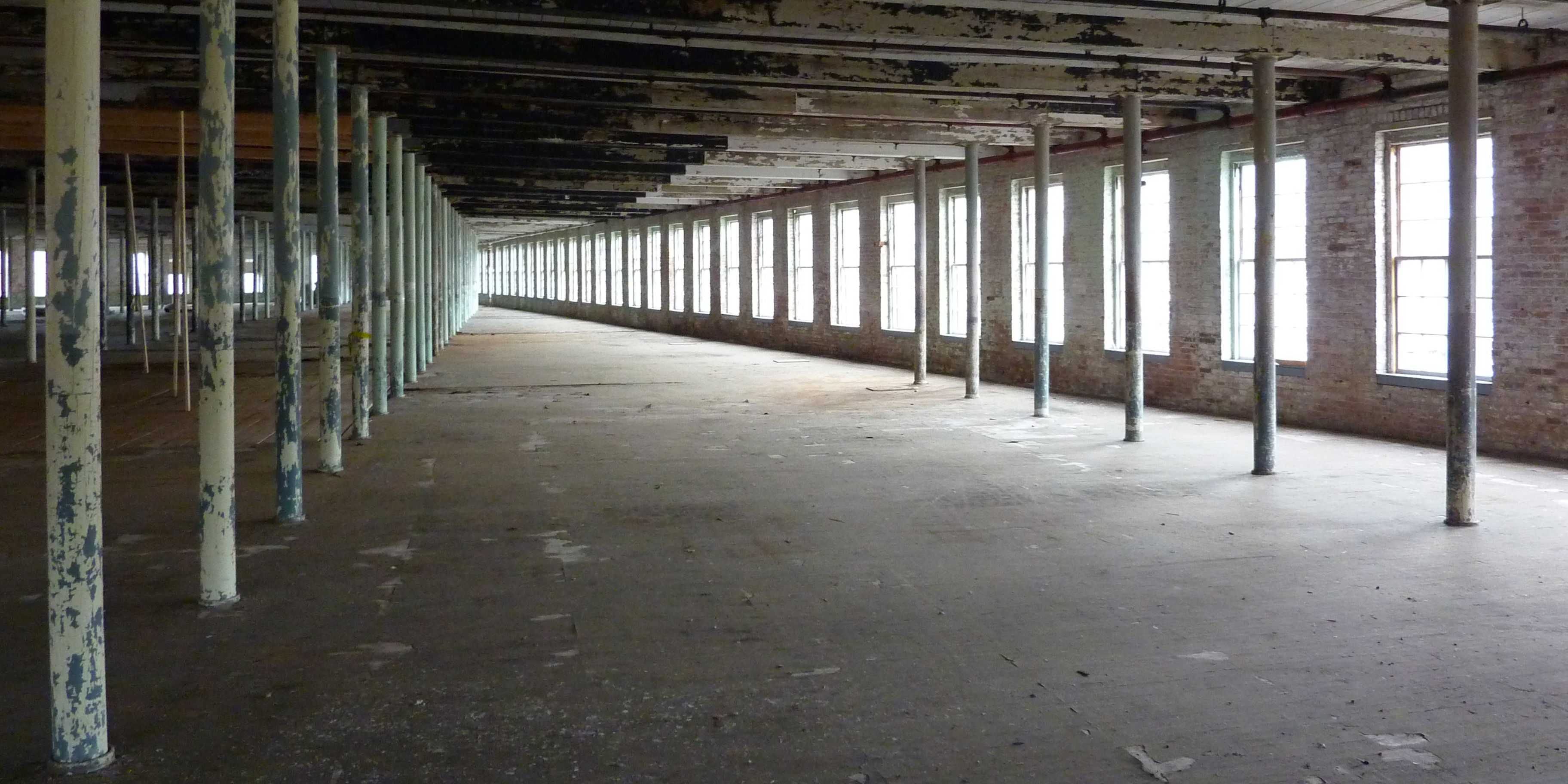Building 6, Exhibition
- On view now
- MASS MoCA
“Lifting the veil on Mass MoCA’s expansion,” The Boston Globe explores the renovations and long-term partnerships of MASS MoCA’s B6: The Robert W. Wilson Building.
On May 28, 2017, MASS MoCA opened its newly renovated and restored B6: The Robert W. Wilson Building, adding 105,000 square feet of space, nearly doubling the institution’s current gallery footprint and adding new art fabrication workshops, performing artists’ support facilities, and music festival amenities. The centerpiece of the building is a series of changing exhibitions and long-term installations and collaborations with artists Laurie Anderson, Jenny Holzer, and James Turrell, the Louise Bourgeois Trust, the Robert Rauschenberg Foundation, and the estate of Gunnar Schonbeck.
The Robert W. Wilson Building sits at the western perimeter of MASS MoCA’s campus, its prow-like triangular footprint shaped by the confluence of the north and south branches of the Hoosic River. Visitors enter the new space through Building 5, the signature gallery for MASS MoCA’s large-scale installations, which features Nick Cave’s Until through August 2017. The Robert W. Wilson Building, a three-story post-and-beam structure, is distinguished by the ample natural light that enters through the hundreds of windows lining the perimeter of the building. Additional natural light filters into the core of the space through a historic window well that was filled by former tenants, but which was restored during this renovation, its roof replaced with a skylight measuring 20’ wide by 140’ long. This rediscovered space brings light into the heart of the building and incorporates a new series of stairs and bridges that encourage easy movement between floors and across the two sides of the building.
As part of its design, Cambridge, Massachusetts-based Bruner/Cott & Associates sought to balance the rough-hewn industrial beauty of the Robert W. Wilson Building’s original interior — including its many steel pillars, acres of wood flooring, and exposed brick walls — with 21st-century structural requirements and the need for specialized galleries and materials handling requirements to accommodate MASS MoCA’s inventive and often dramatically scaled exhibitions. In keeping with the ethos of exposed industrial materials, more than 800 new steel structural supports were installed throughout the building, some visibly reinforcing the exterior walls as well as the floors, and some supporting heavy-scale works, such as an untitled, monumental, white marble work by Louise Bourgeois, weighing nearly 30 tons. As part of the renovation, more than 5,000 original bricks were removed, cleaned, and re-used, as was over 60,000 square feet of maple flooring. While much of the building’s original floor plan remains intact, Bruner/Cott designed new, multi-level gallery spaces that allow for long cross-gallery views, as well as the installation of multi-story works by James Turrell, which explore light and space through a series of rigorously light-controlled chambers and entry processionals specified by the artist. Bruner/Cott’s design also adds a dramatic two-story mullioned window at the western prow of the building, facing west to the Berkshire and Taconic Mountains in a space conceived for social gatherings, rest, and reading.


